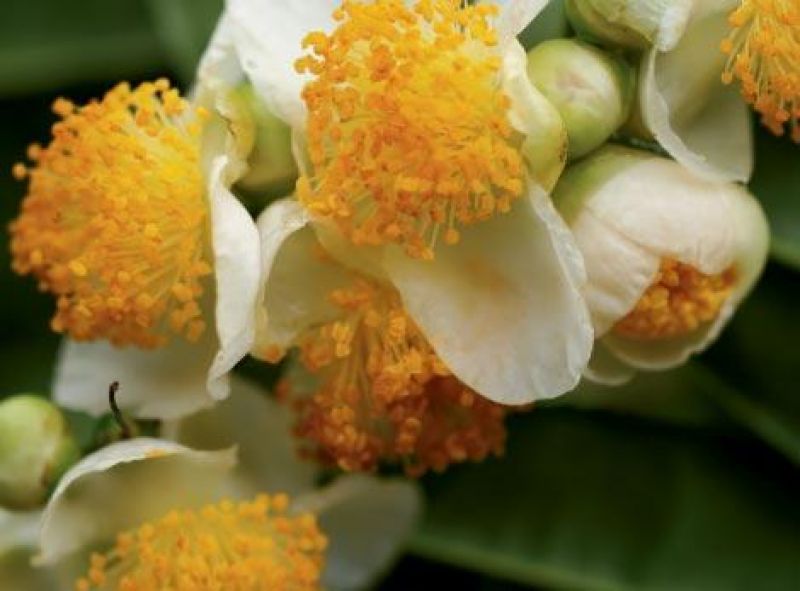
Camellias have long been a Lowcountry garden staple. In fact, the blooming shrubs are said to have been introduced to the United States through Charleston by famed French botanist Andre Michaux in 1786. The flower’s popularity is easily seen in the cool-season months when the glossy-leafed evergreen serves up a show of color. And while there are many members of the camellia genus, the Camellia sinensis (a lesser-known variety with a more subtle color palette) will truly put a little pep in your step. Containing about four percent caffeine, its leaves can be brewed into tea.
Camellia sinensis shares many of the desirable traits of the more popular species, such as shiny, deep green foliage that can be grown as a shrub or pruned as a small tree. It thrives in containers and can also offer structure when planted in the garden. Provide the camellia with partial shade to full sun; plenty of water; and nutrient-rich, well-draining, acidic soil; and you will be rewarded with delicate sprays of white fragrant blooms with bold yellow stamens in late summer or early fall. Need a little more color? Try the ever-so-subtle ‘Rosea’ variety, whose new leaves have a deep purplish-red pigmentation, almost burgundy in color. The light pink, fragrant blooms are small in comparison to most camellias and adorn the plant like a string of twinkling lights, evoking the feel of an enchanted fairy garden.
Hardiness: Zones 7-9
Light: Full sun to partial shade
Soil: Well-draining, pH 5-6
Height: 4-6 feet
Spread: 6-8 feet
Growth Rate: Slow
Benefits: Attracts bees
Pests: Relatively pest-free, occasional scale